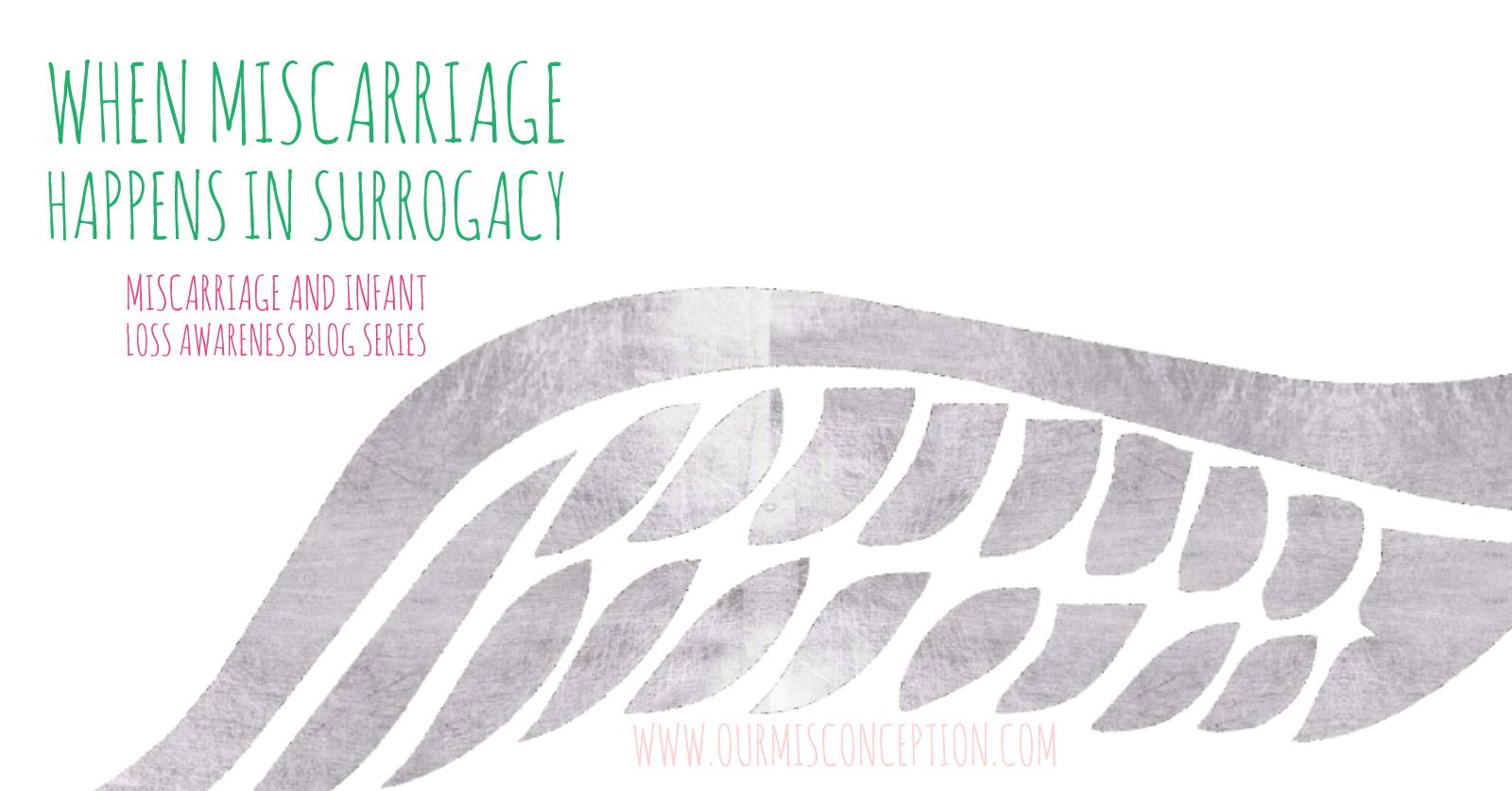
Any loss is difficult. That grieving and unquenching pain increases exponentially with miscarriage or the loss of a child. Surrogacy adds even more complexity to this already intolerable heartache and spreads the potential for irreparable damage and inescapable depression. However, as is often the case for couples that experience loss of an infant or through miscarriage, there is opportunity for that child, regardless of when they received their wings, to positively impact the lives of so many people around them. Now let us be clear, no loss is positive, it is utterly devastating. In a surrogacy the intended parents miscarry the child they loved in their heart and the surrogate grieves the child she loved in her body. However, there can be little rays of light that can shine through the rumble. That is the case for the contribution this week. Susan Fuller, provides a very unique perspective on her experiences as a surrogate and how experiencing the loss of the child she was carrying changed her.
Here is her story:
“Ask him on Wednesday!” she urged me in response to my post on our group email list. “You have an appointment anyway, so just ask him to take a look!”
I already knew that’s exactly what I wanted, but I was hesitant to ask for it. I didn’t want my intended parents billed for something so frivolous as an extra ultrasound just to settle my nerves. I’d been through this before, this being my fifth surrogacy, and it was my second time carrying for this couple and I adored them. There really were no unknown variables this time around.
But even still, I couldn’t lay to rest this deep feeling of dread pooling in the pit of my stomach. It seemingly came out of nowhere – all of my betas and blood levels were fine and our first two ultrasounds showed one healthy baby growing on track. I’d had no bleeding, no cramping, nor any other signal that something might be wrong, other than the dark concern that shadowed me.
So when a friend on the mothers’ email list I’d belonged to posted a friendly “How’s the pregnancy, Susan?” message to our group, I responded with “It’s good, I guess. I’m fine, no problems, but I can’t get over this feeling that something is wrong. I have no idea why, but something’s wrong, I’m sure.”
I went on to say that I had a lab appointment later in the week and I could ask for an ultrasound then, but without any sign of trouble, the doctor would probably think I was crazy. And I really did not want to needlessly spend my intended parents’ money, surrogacy was expensive enough as it is. I hadn’t told them about my anxiousness because I didn’t want to worry them over what surely was nothing.
By the time Wednesday morning came, I was a jittery bundle of nerves. As I sat for my blood draw, the nurse knew something was wrong without me saying a word. I mentioned my concerns to her and she immediately put me in an exam room for an ultrasound.
When the doctor came in, he asked me all the usual questions – bleeding? No. Cramping? No. Fever? No. Swelling? No. Absent any objective findings, he agreed to take a look by ultrasound.
In a few seconds our little baby popped into focus on the screen, floating around with arms waving and legs wiggling, safely cradled deep inside my uterus. The heartbeat was strong and the baby measured exactly on track – 8 weeks and 4 days, so I breathed a sigh of relief. Now the only concern I had was telling my intended parents that my needless freak-out would cost them an extra $400 in doctor’s fees.
As the pregnancy moved along, I had no explanation for my early anxiety other than I knew how precious and deeply rewarding a great surrogacy experience was and I was over the moon to have the chance to repeat it. In our first surrogacy together I delivered their baby girl at their house in a planned homebirth. It was a peaceful, joyful and intimate experience for each of us, and much to my delight, I nursed the baby for several days and pumped milk for her for months.
It was a dream surrogacy scenario and everything I’d always wanted and now I had the chance to do it again. I would not only get to carry another baby for them, but I got to go through the experience along with the first baby I’d delivered for them and see it through her eyes this time around. The thought of it left my heart full.
Understanding the innate fragility of life, I wondered to myself what I had done to deserve this dream come true not only once but twice. And thus, knowing what there was to lose if this pregnancy didn’t make it (they had no more frozen embryos left), I held onto the experience closely, which surely was the cause of my anxiety.
The following weeks turned into unremarkable months, much to my relief and pleasure.
At 16 weeks we had a very quick 4-D ultrasound to determine the gender of the baby and my intended parents found out they were having another girl – their third daughter.
And then at 21 weeks we had another ultrasound, this time a full exam, which showed that their daughter had a fatal condition. Her heart was not connected to her lungs.
The next day we met with a fetal cardiologist who confirmed the findings. Records were sent all over the country for second and third and fourth opinions, all to no avail. My intended mother held me as I wept in the hallway outside the doctor’s office.
“I love her, I love her so much,” I sobbed.
“I know,” she said softly.
If the baby managed to survive the pregnancy, every doctor said, she would die shortly after birth.
I hated that my intended mother had to comfort me, especially since she was the one losing her child, but I was bereft.
I cried rivers of tears for her every night. I would lay on the couch and try (and fail) to sleep, my body curled up in the fetal position as if to shield her from her own harsh reality. I could not sleep in my bed or my bedroom with my husband – I needed to be alone with her, as if I was the only one who could save her.But I couldn’t. The nights crawled by. Hour after hour I alternated between sobbing into the pillow and fitful, tortured sleep as I gradually felt her movements slow down. What were once the normal rolls and kicks and wiggles of the sixth month of pregnancy turned into only the occasional slight shift in my belly. Eventually all of the movements stopped, including her heartbeat, and I delivered her at 24 weeks stillborn.
We met with a genetic counselor who collected scores of information from us in an attempt to discover what had caused the problem and if there could be any concern for their living children. It was chromosomal, the counselor said, and the baby’s heart just didn’t develop according to plan.
“Here is how the heart typically develops,” she said, as she picked up a small, illustrated flip chart of embryonic development during the first eight weeks of life and held it up for us to see.
“The cardiac veins and arteries form during the first part of the sixth week of gestation,” said the genetic counselor, “and that’s when things went wrong with your baby.”
That’s when things went wrong. That’s when things went wrong. The words reverberated in my head. The sixth week of gestation. That’s when things went wrong. The sixth week of gestation. The counselor’s words echoed and grew louder in my head until finally they tumbled into the pit of my stomach with a rock hard thud of recognition.
The sixth week of gestation is the eighth week of pregnancy. And the eighth week of my pregnancy was when I was consumed with unattributed fear over her safety.
I now had my answer. It was now obvious to me why I was so stricken with concern during that eighth week. I knew, on a cellular level, what no one else could see at the time.
My body had been perfectly in tune with her imperfect little body. And although she’s not here on Earth with us now, her heart continues to beat today, safely ensconced within mine, forever.
Want to know more about Susan?

Susan has written a book about the surrogacy experience. Check out her book on Amazon. You can also find Susan at www.surrogacybydesign.com or on Twitter (@SurrogacySusan), Instagram (SurrogacyByDesign), and Facebook (Surrogacy by Design).






